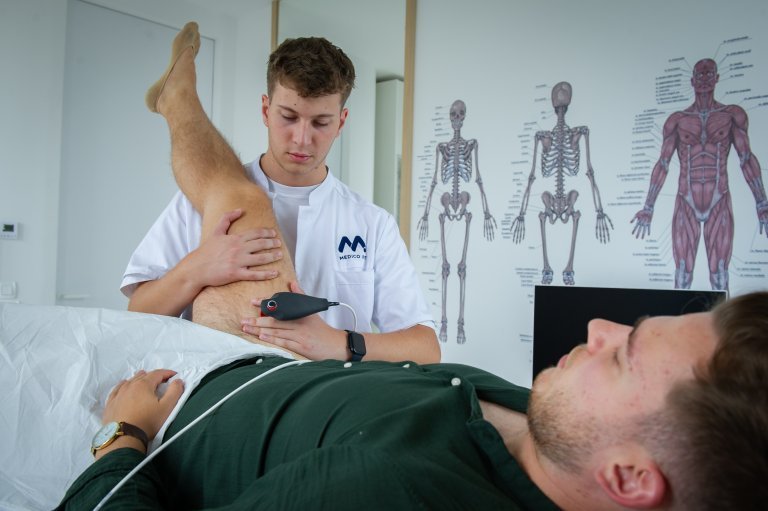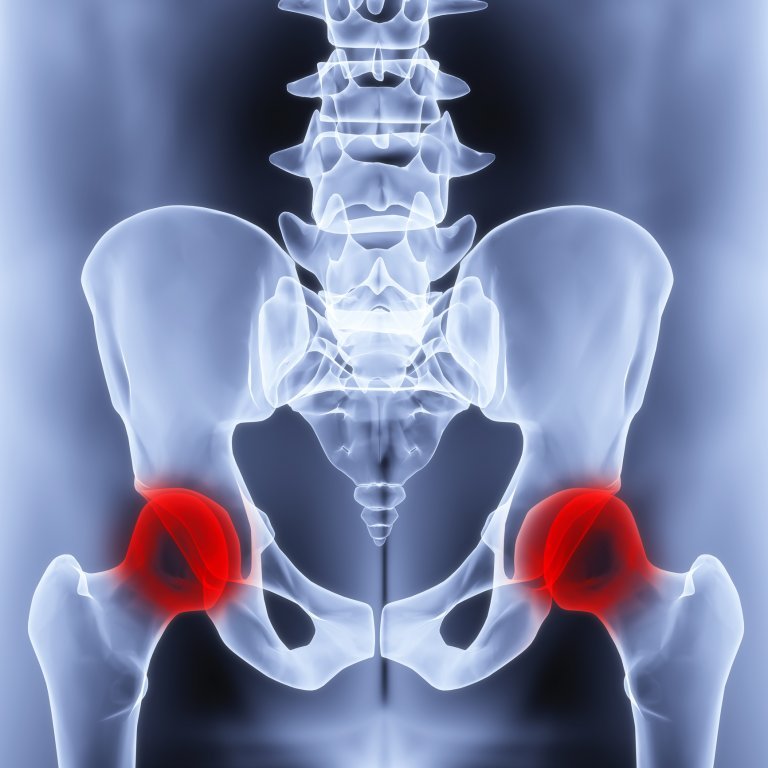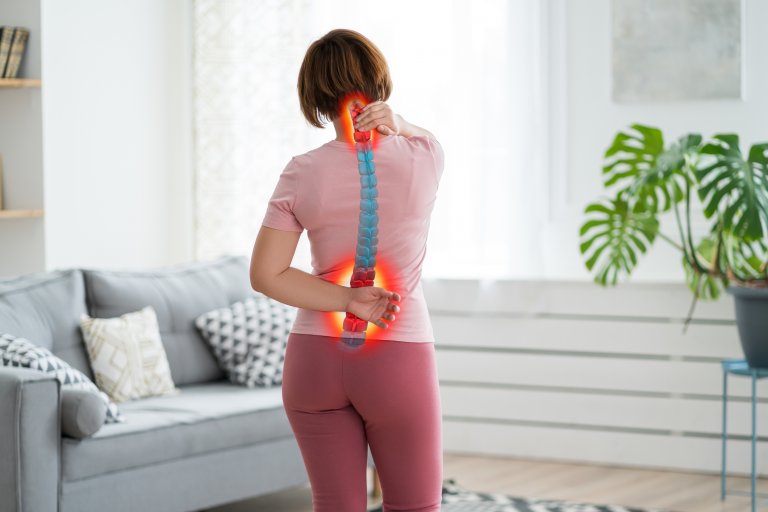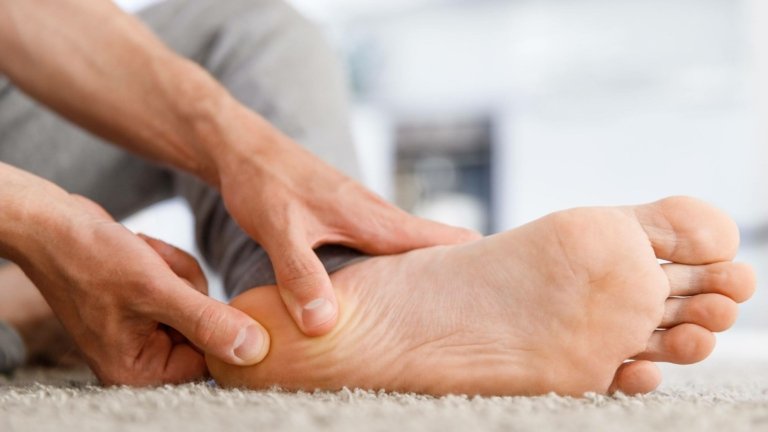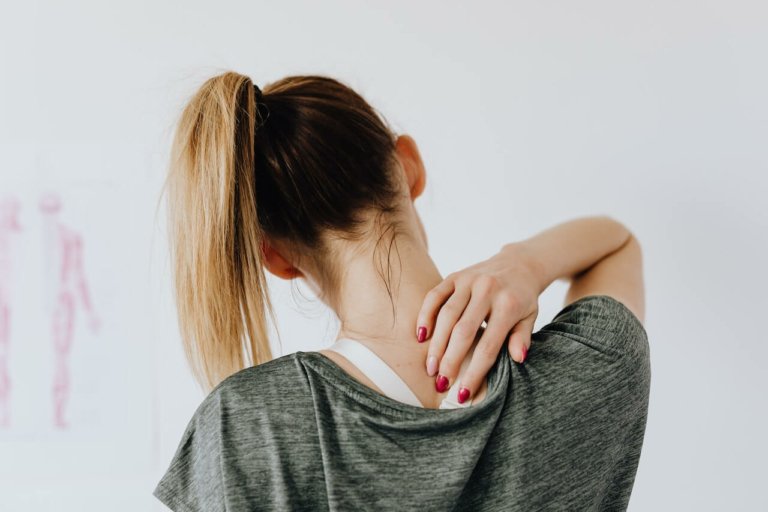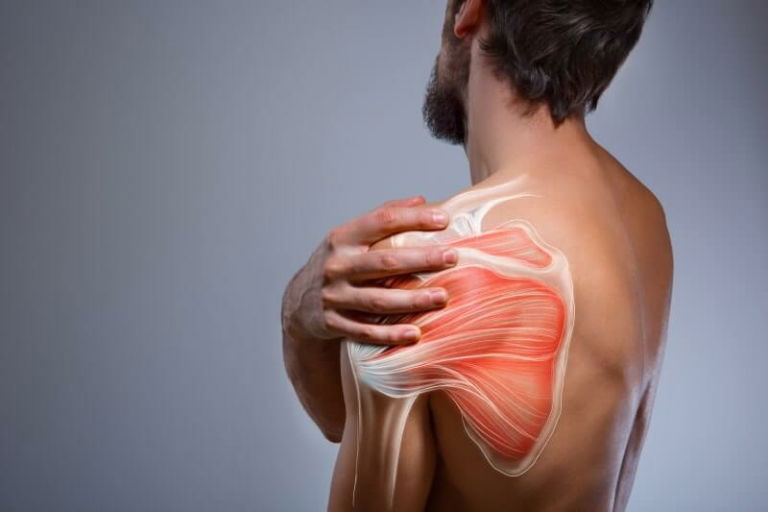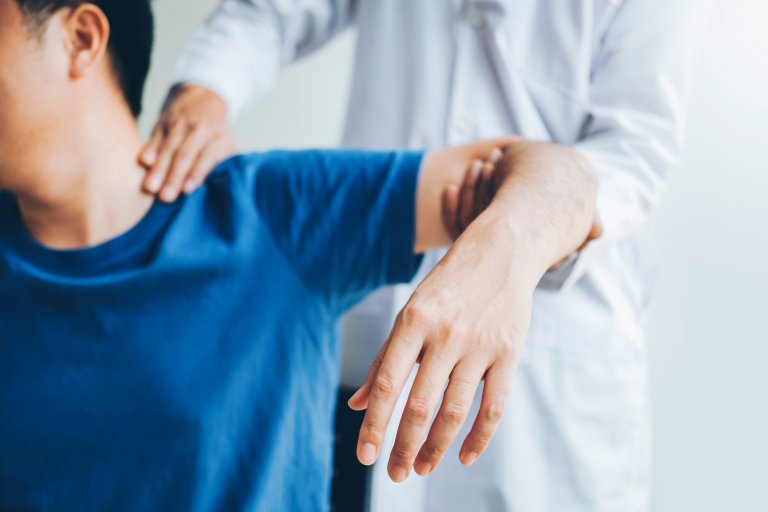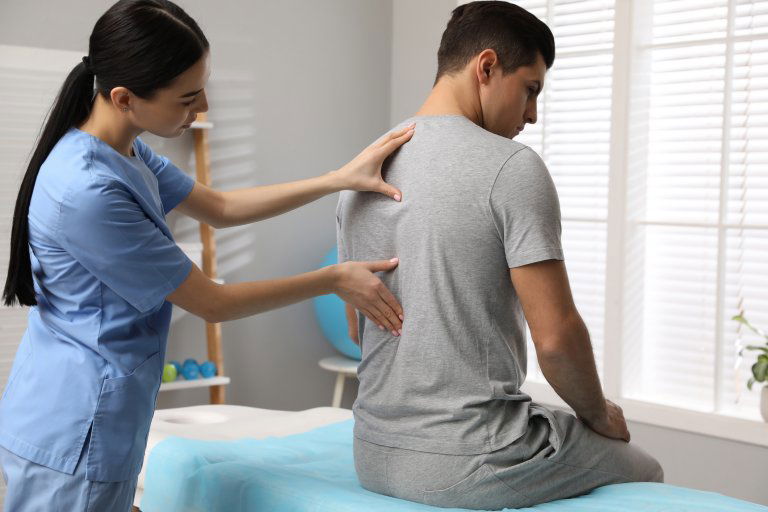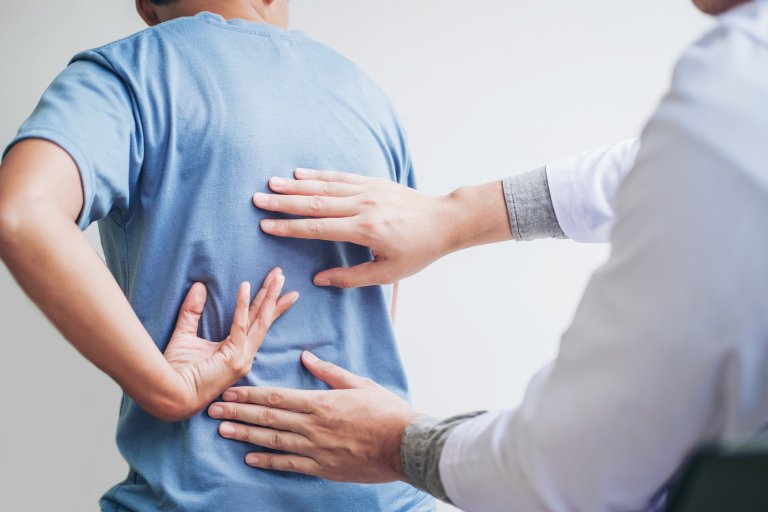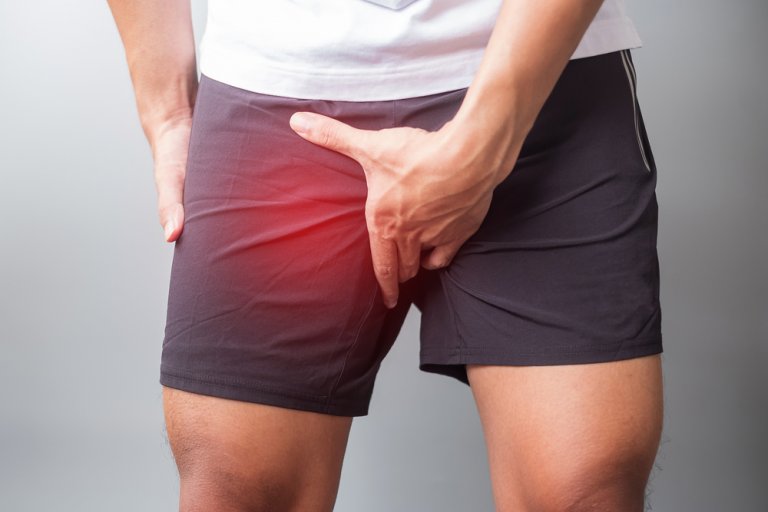Have you ever experienced groin pain? How did you deal with this problem? Do you play sports or engage in any other physical activity that puts you at risk of groin injuries? Are you a sports enthusiast and want to improve your physical condition and reduce the risk of injuries?
Groin pain is a common problem that affects athletes as well as all other individuals. This pain can occur for a variety of reasons and can pose a challenge in everyday activities and sports performance.
Did you know that groin pain is most common among football players? It affects approximately one in five players – the injury incidence rate is around 18%.
Groin pain is not something you should tolerate or ignore. With proper understanding and action, you can reduce discomfort, speed up recovery, and safely return to your sports and everyday activities.
In this article, we will explore the causes, preventive measures, and methods of treatment and rehabilitation of groin pain at MEDICOFIT clinic.
Book an appointment for groin pain treatment
Anatomy of the groin area
The groin area is a complex anatomical region located in the lower abdomen – around the diaphragms. This region includes many structures and plays an important role in torso stability, hip and leg movement, and load transfer between the lower body and the torso.
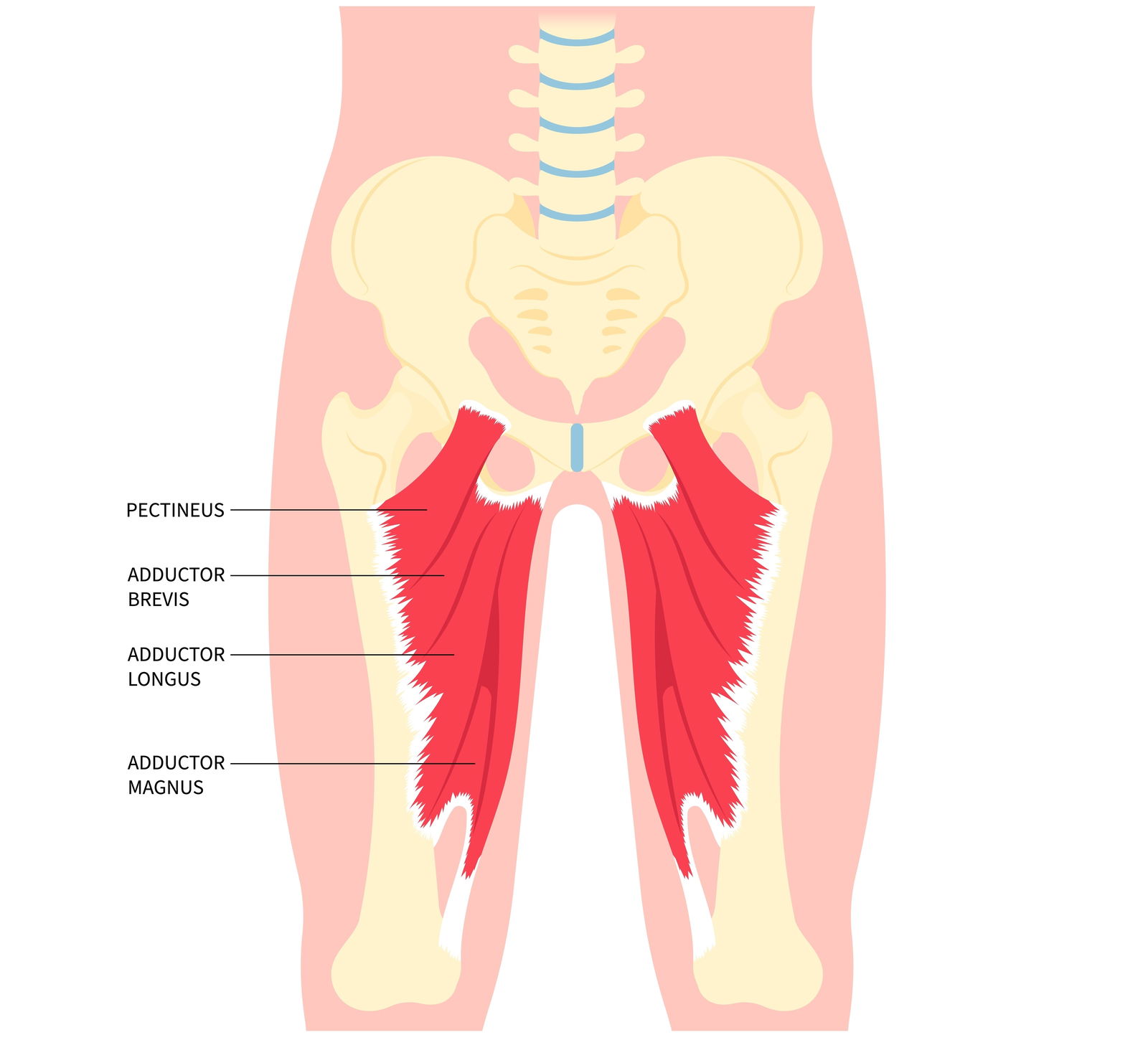
- The groin region is the attachment site of abdominal wall muscles (transversus, obliquus and rectus abdominis), which help with trunk flexion and stabilisation, the iliopsoas muscle (which has the function of flexing the hip), and the thigh muscles – the adductors (longus, brevis, magnus and gracilis), which enables the thighs to be brought closer together.
- Tendons connect muscles to bones. The rectus abdominis tendon connects the rectus abdominis muscle to the pubic bone. The tendons of the thigh adductor muscles connect the muscles to the bones of the thighs and pelvis.
- Among the important ligaments is the inguinal ligament, which runs from the pelvis to the pubic bone and forms the floor of the inguinal canal.
- The main bones in this area are the pubic bone (os pubis) and the iliac bone (os ilium), which serve as the attachment site for muscles.
This area is crucial for movement and stability of the torso and lower extremities. Any damage to these structures can cause pain and serious problems with movement.
The groin is a complex area where the abdominal musculature transitions into the muscles of the lower extremity. The pubic bone and symphysis are important points for attachment and torque generation – and for this reason, they are often prone to injury.
Based on anatomical location, groin pain is usually divided into four main groups:
Pain in the adductor compartment
Pain originating from the adductor compartment is the most common form of groin pain in athletes. This pain is usually the result of muscle strain or tear – most commonly the adductor longus and gracilis. More than 60% of all groin pain is related to injuries to this region.
Iliopsoas muscle pain
Pain originating from the iliopsoas muscle occurs when the hip joint is intensely flexed or extended. This pain may be caused by inflammation of the muscle itself, inflammation of the underlying bursa, or the crossing of the iliopsoas muscle tendon over the iliopectineal ridge. Pain in this area can also occur due to problems within the hip joint.
Abdominal/inguinal pain
The lower part of the abdominal wall is weaker than the other parts of the abdominal muscle wall. This is because the transversus abdominis and obliquus internus muscles attach only anteriorly to the rectus abdominis muscle, while the posterior side is formed only by the transverse fascia.
Because the adductor muscles (the muscles that bring the thighs closer together) are usually stronger than the abdominal muscles, this imbalance in strength can lead to damage to one or more of these structures: the rectus abdominis muscle or tendon, the transverse fascia, or the aponeurosis of the obliquus externus muscle.
Signs of this injury develop slowly and are common in athletes – especially football players, where the ratio of leg to abdominal wall strength is most increased. An individual usually seeks help when problems have been ongoing for a long time.
Pubic pain
Pubic pain is the result of changes in the tissues around the pubic symphysis, which occur due to repeated irritation of the muscle attachments and the transmission of strong forces across the symphysis. Clinically, it manifests as pain that occurs when pressure is applied to the pubic symphysis.
It is recommended to strengthen muscles that include the rotators, adductors, and hip flexors. This can help improve stability and reduce stress on the pubic symphysis, and consequently reduce pain.
Hip pain
When it comes to problems in the hip joint, they usually manifest with pain in the inguinal region of the groin. These problems include labrum injuries (the cartilage lining in the hip joint), degeneration of the articular cartilage (osteoarthrosis), hip impingement syndrome, and stress fractures of the femoral neck.
Symptoms can vary by condition and include locking or catching of the hip joint, limited mobility, pain with specific movements, or discomfort when bearing weight.
Book an appointment for groin pain treatment
Common causes of groin pain
Muscle or tendon injury
Muscle and tendon injuries in the groin area are common in athletes, especially those who play sports that require quick changes of direction and stopping – such as football, track and field, and hockey. These injuries can be very painful and affect an athlete’s ability to train and compete.
Injuries usually occur due to sudden movements, such as quick turns, collisions, or sudden stops. Athletes who have not warmed up enough or do not have enough strength in the muscles of the groin area are also susceptible to this type of injury.
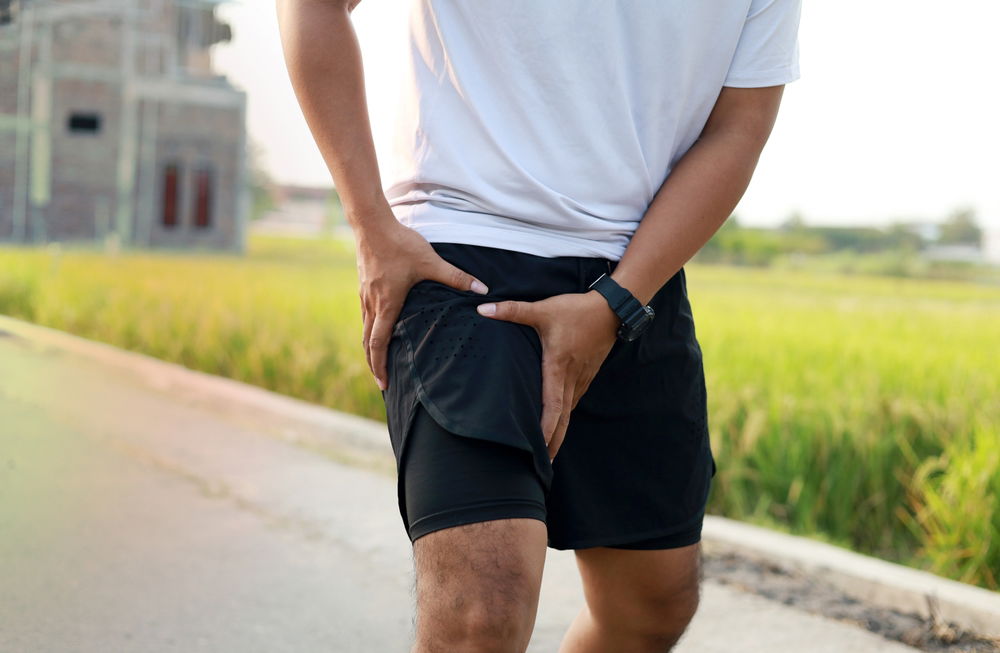
Symptoms include groin pain that may spread down the thighs, discomfort when bending or extending the hip, swelling, and tenderness to the touch.
Did you know that muscle injuries in the groin area most often occur as a muscle strain, tear, or inflammation? A muscle strain is a milder form of injury, while a tear is more severe and requires longer rehabilitation.
Treatment for muscle injuries in the groin area usually includes rest, ice, compression, and elevation of the affected area (RICE protocol). Physiotherapy and rehabilitation play an important role in recovery, as they help strengthen muscles, increase mobility, and reduce the risk of re-injury.
Osteitis pubis
Osteitis pubis is an inflammation of the joint between the left and right pubic bones (symphysis pubis), which causes pain and swelling in the groin or lower abdomen.
Osteitis pubis is a type of symphysis pubis dysfunction, usually caused by repetitive movements in the hip, pelvis, and groin area. This condition commonly affects athletes who play sports that involve repetitive movements, such as football, hockey, and track and field.
Did you know that osteitis pubis is the cause of about 15% of groin pain cases? It can also occur as a result of urological surgeries in this area or in pregnant women.
Recovery usually requires rest and avoiding excessive physical activity. It is a serious condition that requires appropriate treatment and following the recommendations of an expert.
Rest, physiotherapy rehabilitation, and proper physical activity management are key to managing this disease and reducing the risk of recurrence.
Athletic pubalgia – sports hernia
A sports hernia is a painful soft tissue injury that occurs in the groin area. It most often occurs in sports that require sudden changes in direction or intense turning.
Although a sports hernia can lead to a classic inguinal hernia, it is a different injury.
- A classic inguinal hernia (the most common type of groin hernia) occurs when abdominal tissue (part of the intestine) pushes through an opening in the lower abdominal wall, creating a painful bulge.
- A sports hernia is a strain/tear of any soft tissue (muscle, tendon, ligament) in the lower abdomen or groin area.
Because different tissues can be affected and it is not a classic hernia, the medical community prefers to use the term “athletic pubalgia” to describe this injury.
Injuries are the result of an imbalance between the abdominal muscles of the lower abdomen and the thigh muscles, and often also improper training. Symptoms usually occur during the physical activity that causes the injury and subside at rest.
The most important thing is prevention, which includes proper exercise for the muscles of the lower abdomen and hip adductors, which reduces the risk of injury. Carefully planned training and proper physical preparation are key to preventing a sports hernia.
Snapping hip syndrome
Snapping hip syndrome, also known as coxa saltans, is a medical condition in which a person experiences popping or snapping sounds in the hip joint during movement. This syndrome is common among athletes, especially ballet dancers. As many as 90% of all cases of snapping hip occur in ballet dancers, which is why this condition is often called dancer’s hip.
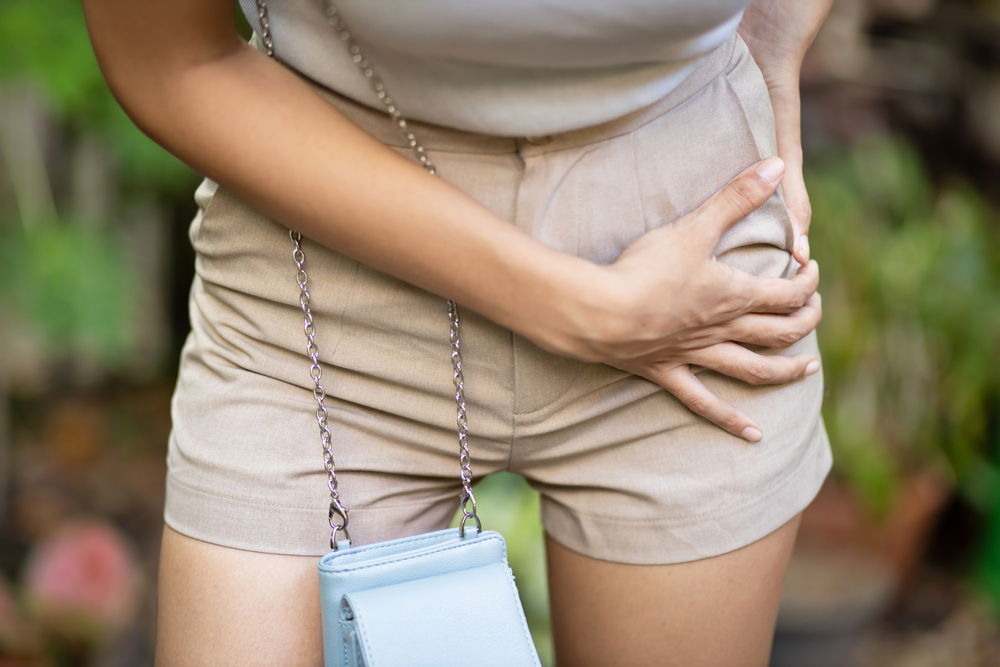
Snapping hip syndrome usually occurs due to friction or sliding of soft tissues, such as ligaments or tendons, over the bones in the hip joint during movement. There are two common types of this syndrome:
- Extra-articular snapping hip syndrome: In this type, the iliopsoas or sartorius tendon slides over a bump on the femur (greater trochanter), causing a snapping sound.
- Intra-articular snapping hip syndrome: In this type, the problem is located inside the hip – a labrum tear or a loose body in the joint space.
Symptoms of snapping hip syndrome may include hip pain, snapping or sliding sounds during movement, and limited hip mobility. Treatment for this syndrome usually includes specialised physiotherapy and stretching exercises. In rare cases, when other methods do not provide relief, surgery may be necessary.
Hip osteoarthrosis
Osteoarthrosis, often called osteoarthritis, is a chronic joint disease that can also occur in hip joints and cause groin pain. It is a degenerative disease in which the cartilage in the joint gradually breaks down, leading to pain, limited mobility, and inflammation.
In hip arthrosis, the cartilage in the hip joint wears down, causing friction between the bones and pain. The pain usually occurs in the groin area, but can also spread to the thigh or lower back. Individuals with this condition may experience stiffness and limited mobility in the hip.
Treatment for osteoarthrosis includes various methods, such as specialised physiotherapy, pain-relieving medications, lifestyle changes such as weight loss, changes of activities, and sometimes surgery if symptoms are severe and unresponsive to other therapies.
Book an appointment for groin pain treatment
Groin pain can manifest as a sensation of pulling, tearing, or tenderness. Discomfort may worsen during certain activities or in certain positions (e.g. sitting versus lying down).
The sharpest pain may occur when you wake up in the morning and try to get out of bed. Or you may feel fine in the morning, but notice that the pain gets worse during the day, when you move.
The sensation of groin pain is not the same for everyone, as it can occur as a symptom of various conditions.
Groin pain can occur due to a variety of causes, including muscle strain, injury, inflammation, or other health problems. Symptoms can vary depending on the underlying cause, but some general symptoms include:
- Groin pain is the primary symptom. It can be mild, moderate, or severe, and can present as a sharp or dull pain.
- Swelling often occurs, especially with injuries or inflammation.
- The affected area may be sensitive to touch, causing discomfort.
- Pain can limit mobility in the hip and pelvis.
- If groin pain is caused by infection and inflammation, symptoms such as increased body temperature, redness, and warmth in the affected area may occur.
- Groin pain can lead to compensatory changes in gait, as individuals attempt to reduce pressure on the affected area by changing their movement.
It is important to consult an expert if you are experiencing groin pain, as proper diagnosis and treatment can help relieve symptoms and prevent potential serious complications.
Book an appointment for groin pain treatment
How do we diagnose the cause of groin pain?
Diagnosing groin pain is a complex process that involves taking a detailed medical history and performing a physical examination.
During the physical examination, the diagnostician will ask you a number of questions to better understand your condition. Expect to share more information about your groin pain, including:
- The exact location of the pain.
- How the pain feels and where it spreads.
- What you were doing when the pain first appeared.
- How long you have been experiencing the pain.
- What exacerbates or relieves the pain.
- How the pain affects walking or other movements.
- Whether you hear a popping or snapping sound in your hip.
The diagnostician will carefully examine the groin area and surrounding areas – including the spine, hip, and knee. They may ask you to do certain movements and perform specific provocative tests to determine the cause of your discomfort. They may also apply pressure on specific areas using their fingers (palpation) to determine the exact location of the source of pain and tenderness.
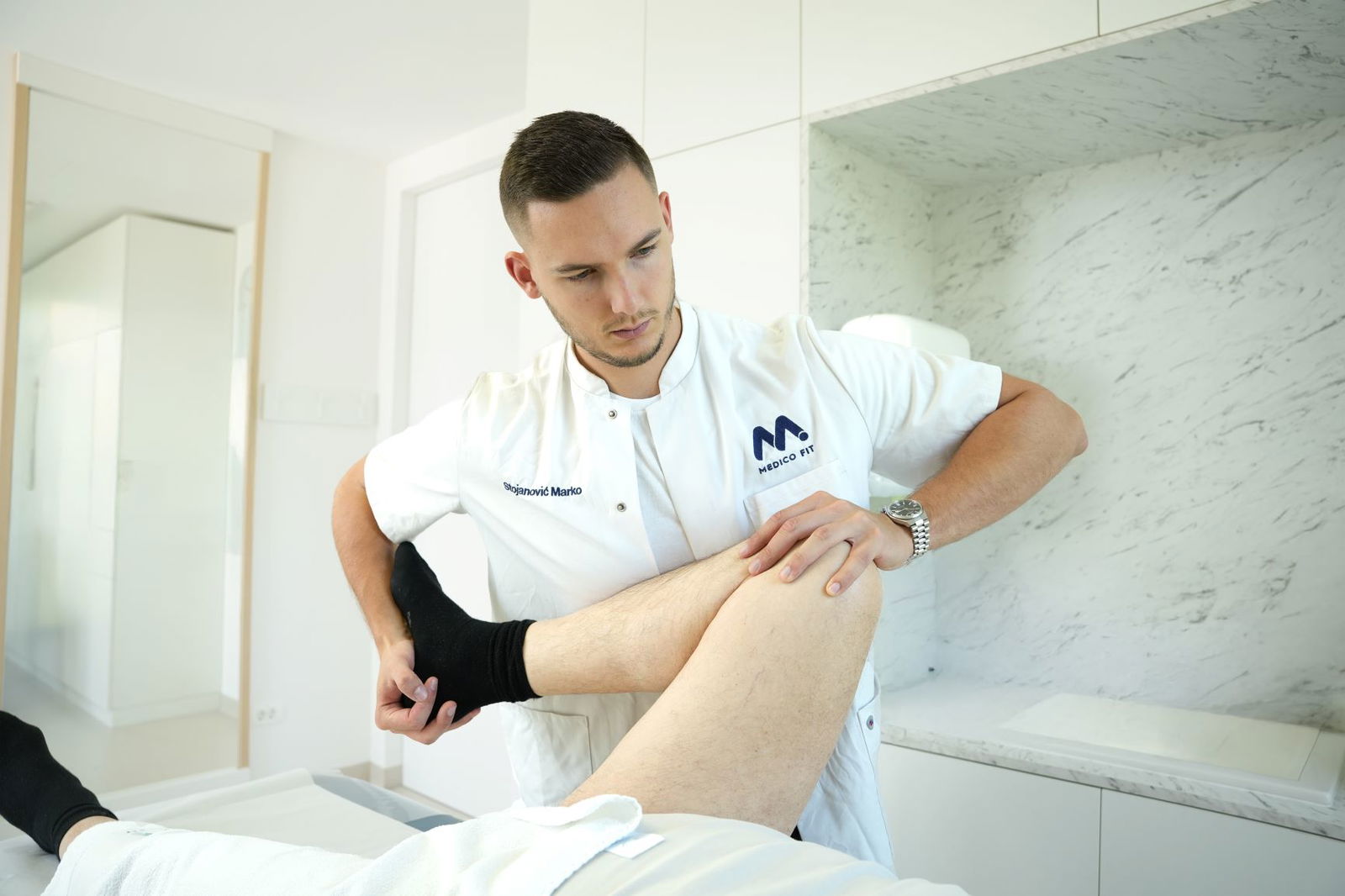
Imaging tests such as computed tomography (CT), magnetic resonance imaging (MRI), ultrasound, or X-ray are recommended in some cases.
Based on the diagnostic examination, we will prepare a tailored treatment programme. You can find a description of the treatment process at MEDICOFIT clinic below.
Book an appointment for groin pain treatment
Groin pain treatment at MEDICOFIT clinic
Acute physiotherapy
Physiotherapy for groin injuries is important for restoring function and reducing pain. This is especially important for athletes and active individuals.
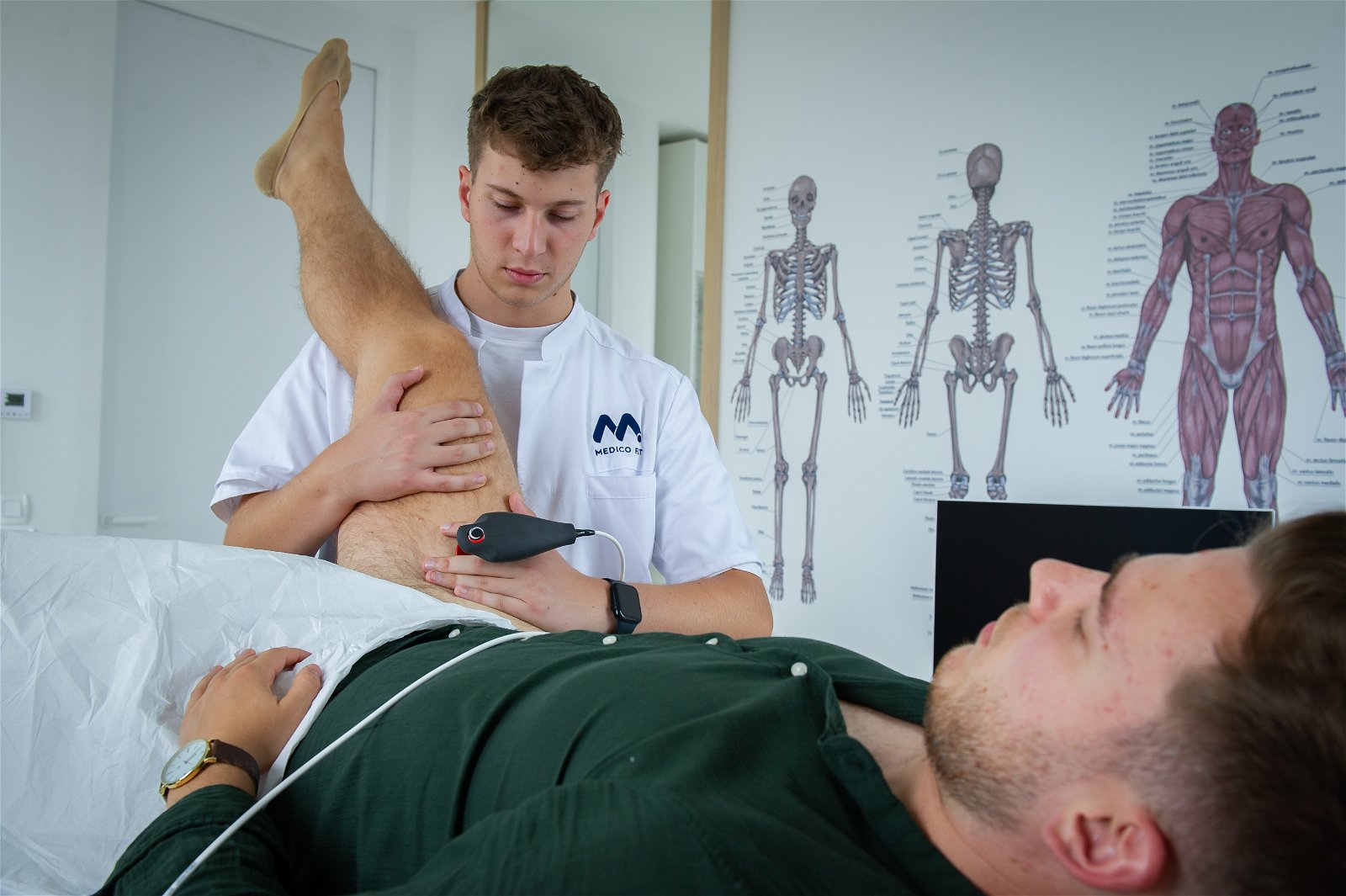
At MEDICOFIT clinic, we have developed specialised rehabilitation protocols for the treatment of groin pain, based on tried-and-tested approaches.
Treatment approaches are tailored based on the causes of the injury and the underlying pathology causing groin pain. Our comprehensive treatment involves the use of advanced therapeutic techniques, including:
- Manual therapy: Using manual techniques, we perform therapeutic massage and manipulation, which help to relax tense muscles and improve mobility in the groin.
- Therapeutic exercises: We have developed special exercises that include isometric, eccentric and concentric regimens of the muscle area. These exercises are tailored to the individual and help strengthen the muscles in the groin and improve the stability of the entire region.
- Laser therapy: We use a therapeutic laser to help speed up the healing process, reduce inflammation, and relieve groin pain.
- TECAR therapy: TECAR therapy is an advanced method based on the use of high-frequency electrical currents to improve blood circulation, reduce inflammation, and promote tissue regeneration in the groin region.
With this comprehensive approach and specialised therapeutic techniques, we aim to provide effective rehabilitation and groin pain relief, allowing patients to quickly return to their activities without any discomfort.
Post-acute kinesiology
Kinesiological training is an important part of rehabilitation for groin pain at MEDICOFIT clinic, aimed at strengthening the entire area and restoring optimal function to the body.
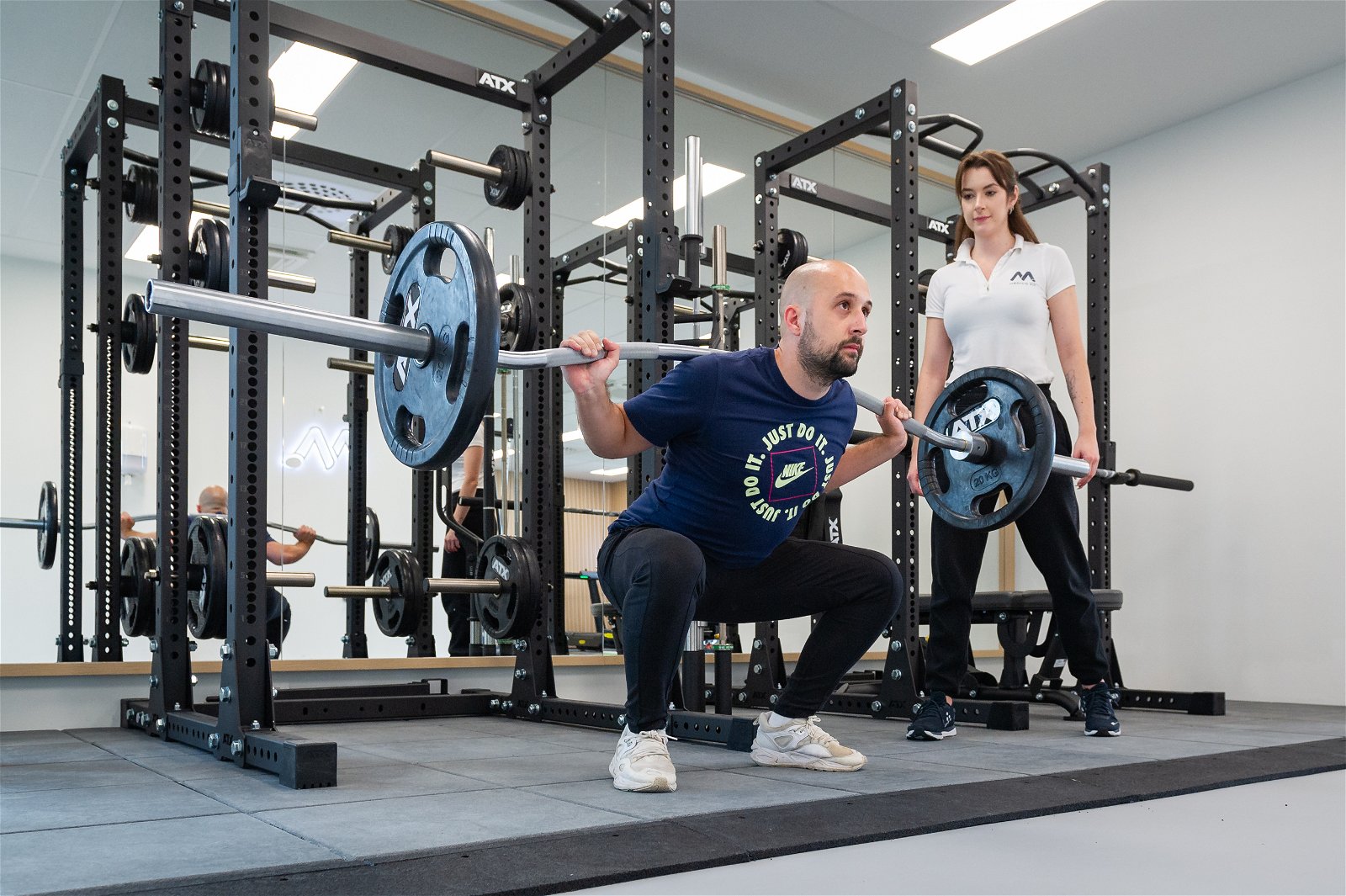
Pred začetkom izvajanja vadbe ocenimo aktualne funkcionalne zmogljivosti ter identificiramo morebitna mišična nesorazmerja. Na podlagi klinične slike se oblikuje prilagojen program, ki zagotavlja postopno in varno izboljšanje stanja.
Tekom izvajanja individualno prilagojenega programa kineziološke vadbe lahko pričakujete:
- Expert guidance: An expert kinesiologist will guide the patient through the exercises and ensure that they are performed with proper technique. The emphasis is on correcting any movement irregularities.
- Strengthening isometric exercises: The training programme includes strength exercises for abdominal muscles, adductors, and hip flexors, which help strengthen and stabilise this area.
- Stretching: Stretching exercises are important for improving mobility in the groin and include stretching the thigh muscles, buttocks, and adductors.
- Proprioceptive exercises: To improve balance and coordination, we often include proprioceptive exercises, which help prevent re-injury.
The exercise programme is gradually adjusted and expanded as the patient’s condition improves. The goal is to safely allow the patient to return to their normal activities, including sports. A kinesiologist will constantly monitor the patient’s progress and adjust the exercise programme according to their needs.
Kinesiology exercise for groin pain at MEDICOFIT clinic is comprehensive and aimed at improving the patient’s health and quality of life. A professional approach and an individualised exercise programme are key to successful rehabilitation.
Preventive kinesiotherapy
Regular exercise is key to preventing injuries and maintaining health among athletes, especially those at risk of groin pain.
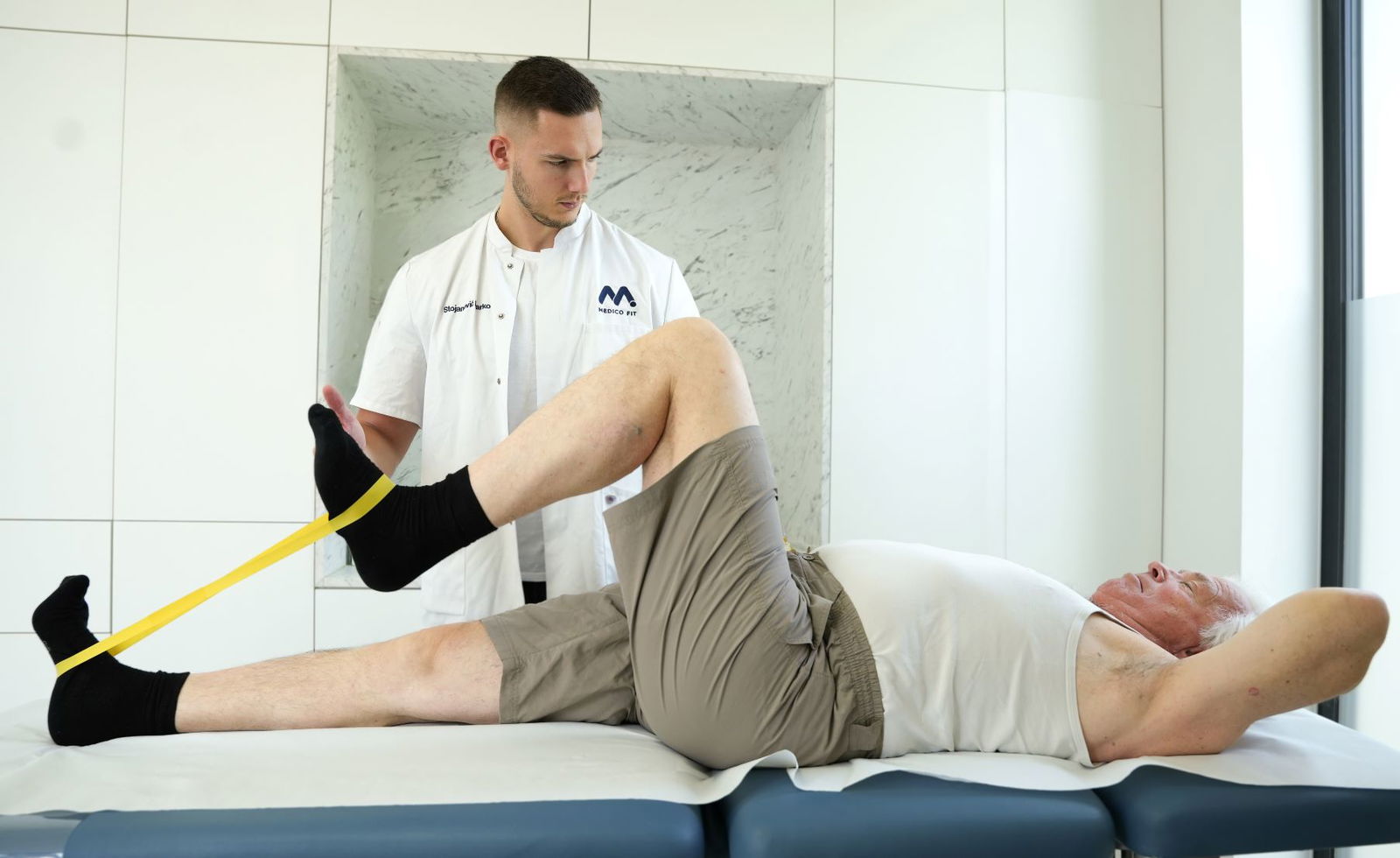
At MEDICOFIT clinic, we have developed a post-rehabilitation programme that serves to reduce the risk of injuries and groin pain – this is especially important for people who engage in intense physical activity.
In the preventive programme, we focus on strengthening the entire body and achieving full muscle symmetry. Regular exercise and attention on proper technique are key for successful prevention of injuries in this area.
Groin pain can not always be prevented, but you can reduce the risk of injuries that lead to groin pain by:
- Warming up: Before starting physical activity, warm up with 5–10 minutes of light cardio exercise, such as running or cycling, to increase blood flow to your muscles and prepare your body for exercise.
- Proper training technique: Learning proper training technique is key. Pay attention to your weightlifting technique, execution of sports movements, and other physical activities. Proper technique reduces the risk of injury.
- Working with a personal trainer or physiotherapist, who will help you prepare a safe training plan.
- Proprioceptive exercises: Exercises to improve balance and coordination are important for preventing injuries.
- Gradual progression: Do not overdo it by increasing the load or intensity of your training. Progress gradually to allow your body to adapt.
- Maintaining regular rest when you feel pain or fatigue – it is always necessary to provide the body with enough time to regenerate.
When to seek medical assistance?
When it comes to groin pain, it is important to know when to see a doctor. There are certain symptoms and situations for which it is advisable to seek medical attention:
- Severe pain and high fever: If you are experiencing severe groin pain and have an accompanying fever, it could indicate a serious medical condition, such as inflammation or infection, and is a reason to see a doctor immediately.
- Sudden, severe groin pain with no known cause: If you experience severe groin pain that is sudden and without an obvious cause, it is wise to seek medical attention. It could be related to emergency conditions such as testicular torsion.
- Swelling and pain on one side of a testicle: If you notice pain, swelling, or visible enlargement on one side of your testicle, it could be a sign of a serious problem and requires immediate medical attention.
- Visible bulge on a testicle: If you notice a bulge on your testicle that is visible and painful, it could be a sign of an inguinal hernia, which may be strangulated and requires urgent medical attention.
- Changes in skin colour or inflammation around the hernia: If you notice changes in skin colour or inflammation around the area of the inguinal hernia, this could indicate a complication.
It is also always a good idea to consult an expert if you have any concerns about groin pain that persists, does not improve, or gets worse. A doctor will be able to perform an appropriate assessment and prescribe the necessary examinations to determine the cause of the pain and advise on further treatment.
References and literature
Ortopedija in šport [Elektronski vir] : izbrana poglavja iz ortopedije : XVIII. mariborskovortopedsko srečanje, interdisciplinarno strokovno srečanje : Maribor, 11. november 2022
Abigail A. Ellsworth PDCC, Mark P. Zoland M, Timothy F. Tyler MA. Athletic Pubalgia and
Associated Rehabilitation. The International Journal of Sports Physical Therapy. 2014;9(6).
Elattar O, Choi HR, Dills VD, Busconi B. Groin Injuries (Athletic Pubalgia) and Return to Play.
Sports Health. SAGE Publications Inc.; 2016 Jul 1;8(4):313–23.
Badowski, E. (2018). Snapping hip syndrome. Orthopaedic nursing, 37(6).
Groin Pain – https://my.clevelandclinic.org/health/mymptoms/groin-pain
Jacobsen, J. S., Thorborg, K., Søballe, K. in Ulrich-Vinther, M. (2012). Eccentric hip abductor weakness in patients with symptomatic external snapping hip. Scandinavian journal of medicine & science in sports, 22(6).
Candela, V., De Carli, A., Longo, U. G., Sturm, S., Bruni, G., Salvatore, G., & Denaro, V. (2021). Hip and Groin Pain in Soccer Players. Joints, 7(4), 182–187. https://doi.org/10.1055/s-0041-1730978
Weber, M. A., Rehnitz, C., Ott, H., & Streich, N. (2013). Groin pain in athletes. RoFo : Fortschritte auf dem Gebiete der Rontgenstrahlen und der Nuklearmedizin, 185(12), 1139–1148. https://doi.org/10.1055/s-0033-1335304
Mitrousias, V., Chytas, D., Banios, K., Fyllos, A., Raoulis, V., Chalatsis, G., Baxevanidou, K., & Zibis, A. (2023). Anatomy and terminology of groin pain: Current concepts. Journal of ISAKOS : joint disorders & orthopaedic sports medicine, 8(5), 381–386. https://doi.org/10.1016/j.jisako.2023.05.006







